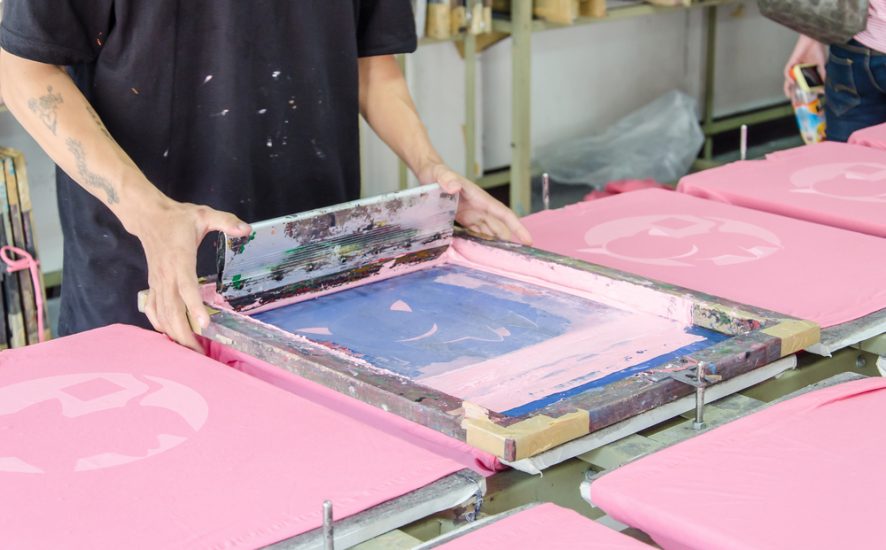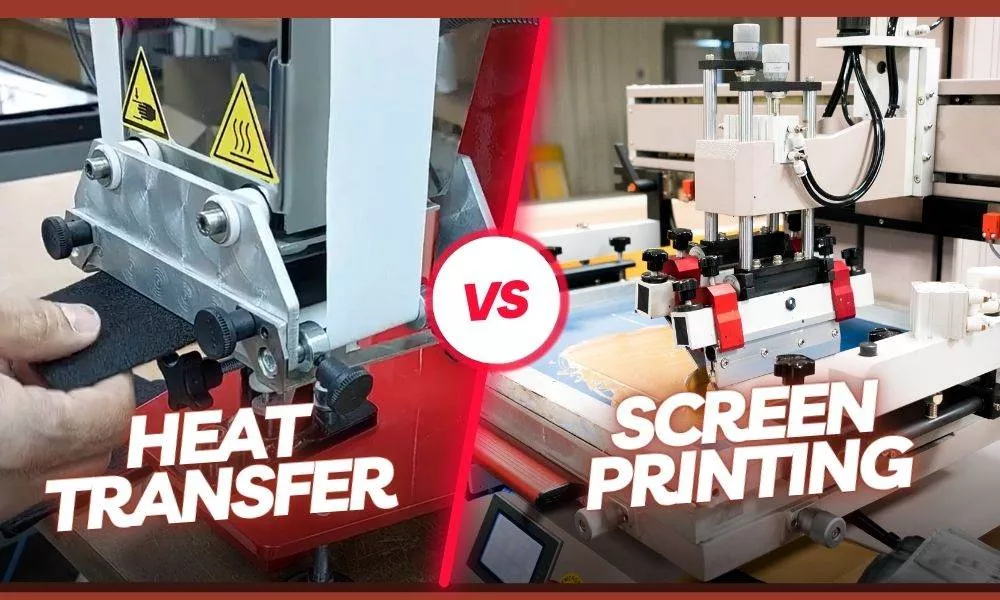Some Known Details About Tx Tees
Some Known Details About Tx Tees
Blog Article
Little Known Questions About Tx Tees.
Table of ContentsTx Tees Things To Know Before You BuyTx Tees - An OverviewTx Tees for BeginnersThe Definitive Guide to Tx TeesThe Of Tx TeesFacts About Tx Tees RevealedSome Ideas on Tx Tees You Should Know
Include up various other costs, like the number of energies it takes to run the shop and the price of ink and solution per style. Take the print listed below.The emulsion ought to just be a couple of cents because you 'd just need to layer one screen for this task. How much should you charge per tee shirt to make a profit? Normally, printers attempt to make up to 45% earnings on a print job. Here's a table to assist you determine that: total expense per item percent of desired revenue as a decimal (instance:.25 or.45) revenue made per thing per job Now let's discuss the success of DTF.

With DTF, you can print a handful of t-shirts, or simply one. Both screen printing and DTF have their niches in the globe.
The Facts About Tx Tees Uncovered
The very best way to know? Ask around and see what print stores like your own are doing. custom screen printing. Attempt both out and see which you like better
When you're selecting what sort of printing technique to make use of for printing your artwork styles on your garments, it is necessary that you understand the distinctions in between these two methods so you can take full advantage of outcomes while reducing expenses. Screen printing is one of the most typically utilized method for publishing styles on textiles.
DTG printing is also called area or straight to garment printing due to the fact that it publishes only what is needed rather than making a display as display printers do. https://txtees02.blog.ss-blog.jp/2024-03-28?1711617286. Screen printing functions by screen filler squeegee display printing ink display mesh screen, after that moving the picture to garment utilizing warm and/or stress
The DTG printer utilizes unique dye-sublimation inks that are applied into a pre-designed photo by an electronic printing system. The inks end up being component of the fabric, permitting vivid colors and phenomenal detail. It's additionally referred to as place or direct to garment printing due to the fact that it prints just what is needed instead of making a screen as display printers do.
Things about Tx Tees
First, it's much faster - you can print a fullcolor picture in mins, as opposed to hours for display printing. Second, there's no established time or expenses involved - you can print any layout you like, without having to produce a display first. Third, there's no waste - because screen printers display print one layout at once, they need to evaluate each shade individually.
The paper is really expensive and can only be used when. Once it's printed on, it needs to be thrown out. - The first purchase cost is reduced than the ahead of time financial investment of DTG printers- You can print multi-color designs one screen at a time rather than needing to publish each color separately like DTG printing.

Our Tx Tees PDFs
However, as opposed to using display mesh as display printers do, dye sublimation printers utilize laser technology to move your images onto garments or paper. A warmth procedure moves the dye from its solid-state straight right into the gas stage which in turn fuses it onto textile substrates when they are quickly warmed to high temperature levels under high stress.
Sublimation printing is environment-friendly. It makes use of less water than screenprinting, and since it does not include making use of damaging solvents, it's risk-free for all sorts of apparel. The color sublimation inks are additionally odorless when healed, unlike display printers that utilize harmful chemicals during the screen printing process that leave behind an undesirable smell.
They also save money on costly devices like direct exposure units because dye sublimation printers don't require a UV exposure unit or a flash cure oven that is usually made use of in display printing (screen printer). What is straight to garment printing (DTG Printing)? DTG printing is a digital screenprinting procedure that publishes straight onto textile making use of specialized inkjet printers
The Tx Tees Statements
DTG printing uses many advantages over typical screenprinting, consisting of the ability to publish photo top quality pictures, greater shade vibrancy, and the capability to publish layouts on darker textiles. DTG printers work Discover More Here by heating the fabric ink until it develops into a gas. The gas after that penetrates the fabric, bonding with the fibers to create a long-term print.

Screen printers just prepare their display then start publishing until they run out of product or ink.- There is a vast array of seasoned screen printers throughout the globe, which can be valuable for beginners. - It's a slower process - display printers usually have to wait for the ink to dry before they can publish the next color- Display printers call for manual work, so there's a higher learning curve and it takes longer to produce a top notch style- Display printing isn't as precise as DTG printing, so you might obtain some "blood loss" of colors from one component of the image onto another otherwise done properly.
Unknown Facts About Tx Tees
Instead of utilizing display mesh as display printers do, dye sublimation printers utilize laser technology to move your photos onto garments or paper. A warmth process moves the color from its solid-state straight into the gas phase which consequently merges it onto material substrates when they are quickly heated up to heats under high pressure.
Sublimation printing is green. It uses much less water than screenprinting, and because it does not involve using unsafe solvents, it's secure for all sorts of clothing. The dye sublimation inks are also odorless when healed, unlike screen printers that make use of unsafe chemicals throughout the display printing procedure that leave an undesirable odor.
They also conserve cash on pricey equipment like exposure systems because dye sublimation printers do not call for a UV direct exposure unit or a flash cure stove that is commonly used in screen printing. What is direct to garment printing (DTG Printing)? DTG printing is a digital screenprinting process that publishes straight onto material making use of specialized inkjet printers.
The Greatest Guide To Tx Tees
DTG printing offers numerous benefits over conventional screenprinting, including the ability to print photo top quality pictures, higher color vibrancy, and the ability to publish layouts on darker textiles. DTG printers function by heating up the textile ink till it develops into a gas. The gas then permeates the fabric, bonding with the fibers to develop an irreversible print.
Report this page